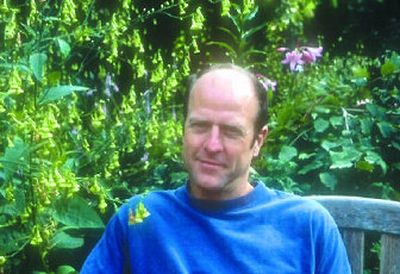‘Idol’ to greet local gardeners

Few plantsmen have done as much to explore the limits of botanical discovery as gardening icon Dan Hinkley. Even rarer are those plantsmen who are willing to share those discoveries and their uses with gardeners around the world.
This Thursday Hinkley will share his experiences and garden philosophy with Spokane gardeners when he speaks at Decades in Spokane Valley.
Hinkley has the reputation of one of the country’s most celebrated plantsmen. Rosie Atkins, editor of Gardens Illustrated Magazine, describes Hinkley as “the thinking gardener’s idol.” Dan is known as the co-founder of the famed Heronswood Nursery and for his devotion to introducing rare and unusual plants to gardeners of North America. His plant explorations have taken him around the world many times. Hinkley has written for a number of periodicals, published two books, and has been the recipient of numerous awards for his work. He is often invited as a guest gardening consultant on Martha Stewart Living television. He currently resides in Indianola, Wash., where he is in the process of realizing his latest endeavor, “the Gardens of Windcliff” on a south facing bluff overlooking the Puget Sound.
The garden was featured in the April 2007 issue of Garden Design Magazine.
The topic of Hinkley’s Spokane talk will be “Unusual Plants for the Inland Mixed Border.”
Hinkley tends to take a broad view of garden-making and looks at herbaceous perennials, shrubs, trees and vines for their foliage and structure first, then their flowers. “All of us are very tempted, especially this time of year to focus on perennials and flowers,” he says.
Looking at plants for everything they can offer creates a garden with year-round interest.
“I really stress the effects of bark, good foliage and even good fruit,” he says. Case in point is the use of stained concrete in his new Windcliff garden that mimics the smooth, rust colored bark of the native madrone trees found nearby on the site.
“You want to make a landscape you can get something out of every day of the year.”
Hinkley will be addressing the issues we face in our USDA Zone 5 gardens as he talks about plant combinations. He grew up in the north central part of the Lower Peninsula of Michigan, a place that sees even more cold than we do. He also spent three years in Wenatchee before discovering the garden paradise of western Washington.
“I definitely won’t be coming over with a palette of plants just to make you envious. There will be lots of ones you can grow.”
He says that even in our colder climate we can be adventuresome by understanding our microclimates and then using the warmer and colder areas to site fussy plants appropriately.